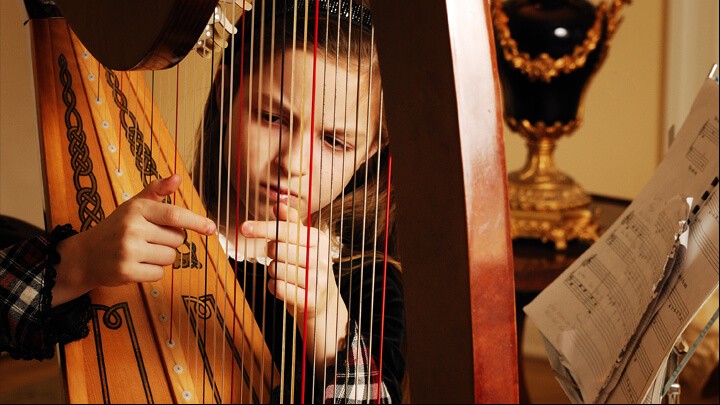Virtually 100% of our nation’s schools currently face the same budget crisis. Yet this “crisis” is an opportunity for school boards and administrators to take a fresh look at our educational goals, policies and practices, and to re-evaluate what is truly important and what truly works. It’s an opportunity to re-define what comprises “the best possible education for our children.”
What do we want our children to learn in school?
Getting straight-As does not guarantee that students will be able to correlate their knowledge to real-life experiences or be fully equipped to adapt to our changing world.
Today, top companies say that the traits they desire most in future employees are well-developed communication and interpersonal skills, a continual striving for excellence, and the ability to solve problems in creative and flexible ways – and all these employable skills are fostered in the music classroom!
Research proves the many benefits of music education
Music programs under threat of elimination are often deemed “extra-curricular” but the Elementary & Secondary Education Act (ESEA) defines the arts as a core academic subject. According to U.S. Secretary of Education Arne Duncan, they play a significant role in children’s development and learning process. Yet music program cuts are still proposed – to help balance the educational budgets and to pour more money into raising reading, math and science test scores.
Ironically, irrefutable research shows music participation is a key component in preparing students to thrive in the 21st century workplace:
• Students in music classes scored, on average, 50 to 100 points higher than students with no arts coursework. The difference in scores becomes more dramatic as the years of music participation increase. (College Entrance Examination Board, 2004)
• Students in top-quality music programs scored 22% higher in English and 20% better in math than students in deficient music programs, with consistent academic differences across geographic areas. (Journal of Research in Music Education, 2007)
• Students with consistently high levels of involvement in instrumental music during the middle- and high-school years show significantly higher levels of math proficiency by grade 12 (Catterall, Chapleau and Iwanaga, UCLA, 1997). For children of lower socio-economic status, the impact of instrumental music involvement was even greater, showing it has the ability to help “close the gap” for high-risk students. (U.S. Department of Education data)
• Students with one year of music participation show an 11% increase in academic performance, students with two years show an increase of 14%, students with three years show an increase of 17%, and students with four years of music participation show an increase of 23%. (Dr. Tim Lautzenheiser, 2010)
• In California, where cuts in public school instrumental music programs caused a 57% statewide reduction in student participation, a downward trend of test scores resulted. (Dr. John Benham, 2010)
Those who focus on the assumed “cost” of retaining a music teacher ignore a very simple fact: It costs more to cut a music teacher than to keep one. Dr. John Benham proves this unequivocally by looking at FTEs, class size and other relevant factors. In California, the state cut 355 music teachers’ positions and predicted an annual savings of $17.75 million. In reality, providing for those same students in a regular classroom would require 473 teachers and cost approximately $23.65 million – an annual loss of nearly $6 million. Our band and string teachers are not a financial liability: many teach at multiple schools, have no scheduled lunch or planning periods, teach classes far greater in size than the average classroom teacher, and log countless after school hours!
Beyond these financial justifications for sustaining school music programs, consider the effects that program cuts have on children. How do we ensure equal access for children whose parents cannot provide private music instruction after school or afford to pay for an instrument? These are the very same children whom research proves benefit greatly from their involvement in school music (Music, At-Risk Students and the Missing Piece, S. Shuler, Music Educators Journal, Nov. 1991). Music participation helps students develop important skills, and to avoid the frustration, alienation and self-doubt that often place them at risk of failure. Music participation develops motivation, a sense of connection with school, and self-competence. It raises the level of task-engagement and productivity. Taking school music away from at-risk children will exponentially increase the distance between the “haves” and the “have-nots.” Can that possibly be “the best possible education for our children?”
School music ensembles are a microcosm of society
Children in performing music classes learn to communicate, analyze, synthesize, evaluate, adapt and cooperate. They learn to be unselfish, flexible, and to accept the direction of a leader. They realize their essential part in the group as they strive for excellence both as individuals and as a whole. They learn to be creative, and feel joy in shared aesthetic experiences. They learn about history, culture, literature, language, physics and mathematics in ways that cannot be experienced in other classrooms.
What skills will today’s college freshmen need to secure jobs upon graduation? What will they take with them as the most important and relevant learning experiences of their school careers? Let’s take a fresh look at our educational goals, policies and practices. Let’s reassess and re-define what comprises “the best possible education for our children.” Let’s acknowledge the proper role of music study in our children’s education.
-- Tracy E. Leenman is Chairman of the South Carolina Coalition for Music Education. She has been a music educator for nearly 40 years, is a performing musician, and is a member of the SupportMusic Coalition, MENC, and the National Association of School Music Dealers (NASMD).

